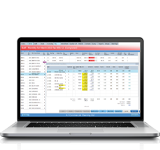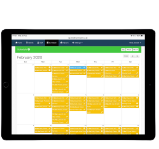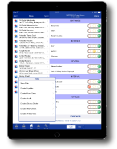April 6th, 2025 is when businesses will see an increase in Employers National Insurance Contributions (Er NI) from 13.5 % to 15% and a new worker lower earnings threshold of £5,000 – previously £9,100. This, when combined with a National Minimum Wage increase to £12.21, will push many more employees pay above the Er NI threshold. For the cleaning industry this will create several challenges resulting from a significant increase in payroll costs.
To ensure any impact is minimised, there are some questions that need to be answered.
Have you reviewed and updated your payroll system?
- Ensure your payroll software adjusts for the new NI thresholds: Your payroll system needs to handle the new thresholds, and any changes to Class 2 and Class 4 NICs for any self-employed workers you may have. Ideally your software provider will be making the changes automatically however it is wise to check.
- Update NMW and NLW: Review your current pay rates and uplift to meet the new minimum levels.
- Update Tax Codes: As the changes come into effect, HMRC may change tax codes for any affected employees.
Have you analysed the potential cost implications?
- Impact on employer NICs: It’s important that you calculate exactly how the changes will affect your overall payroll costs. Businesses within the cleaning sector usually operate with a large number of employees on relatively low hours and wages, which often escape employer NICs. However, with the combination of a higher NMW and a new lower earnings limit of just £5,000, anyone working more than 34 hours per month will incur Er NI. You need to know the full extent of the impact of the hike in NI costs.
- Review your business model: Managing NI costs will become very difficult as the option of employing more part time employees will effectively no longer reduce NI contributions. The emphasis will be on employing the right people for the right jobs with the benefit of increased staff retention. Pricing structures will need to be reviewed to support cost increases and will inevitably need to be passed on to clients. It will pay to start talking to clients as soon as you know what changes to pricing you will need to implement.
At CleanLink, we know that data is power, and we’ve been working closely with some of our clients to understand the current NIC impact on costs and assess the financial health of their businesses after the change. The data we’ve reviewed so far has shown how much of an impact the forthcoming changes will make and demonstrates how important it will be to have a detailed understanding of the impact.
The data we examined shows a significant variance in the current level of Employers NIC (Er NI) of between 1.5% and 5.1% of gross pay costs and that Er NI is payable on between 22% and 58% of employees. Currently, employers have been able to control NI costs to some extent by choosing how they allocate work between their staff. Businesses with less employees who work more hours, pay higher levels of NI.
Taking a typical example, we can see the impact of the changes to NI that will come into effect for the 2025/26 PAYE tax year:
For this business, the impact of the changes in legislation have a significant impact on their payroll costs. With the National Minimum Wage rising to £12.21 from April 1st and the NI Lower Earnings Limit reduced to just £5,000, it means that the number of staff attracting Er NI has more than doubled to 84%. This will result in more than a doubling of their Er NI contributions by £16,500 (+ 4.2% of gross pay) each pay period.
It is very important to be prepared. Do the analysis and review your business model to help manage the impact of the new changes and plan for the future. If you need any support with helping to understand how your business model will be impacted, please do not hesitate to contact us.






